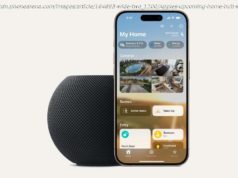If you think your Android phone or iPhone is expensive now, just wait. Foldable phones like the Galaxy Fold and Huawei Mate X, and 5G-ready…
If you think your Android phone or iPhone is expensive now, just wait. Foldable phones like the Galaxy Fold and Huawei Mate X, and 5G-ready devices, like the Galaxy S10 5G and plenty more, will soon push phone prices well over the $1,000 mark that’s become the ceiling for premium phones. All that’s about to change.
Samsung’s foldable Galaxy Fold starts at $1,980 (roughly £1,500 or AU$2,800) for the 4G version, a price that Samsung justifies by virtue of its foldable phone being a luxury device that’s also a true phone-tablet hybrid. (Samsung hasn’t shown off the Fold in person yet, apart from a presentation piece behind glass.) The company hasn’t announced pricing for either of its 5G products, the Galaxy Fold 5G going on sale April 26, or the Galaxy S10 5G that’s is expected later this summer.
Meanwhile, Huawei’s foldable phone, the Mate X, will cost buyers 2,300 euros, or roughly $2,600. That’s high for a phone swathed in leather and sapphire crystal, and unprecedented for one made of plastic. Huawei, too, positions the foldable Mate X in this new category of hybrid devices.
Even 4G „candy bar“-shaped phones in 2019 that don’t bend and don’t have 5G are seeing price inflation. The Galaxy S10 ($900) costs 20 percent more than the median price of the Galaxy S9 ($850). Likewise, the budget-minded Motorola G7 ($299) rose 20 percent from the Moto G6 ($249). Even the OnePlus 6T crept up 3.8 percent from the OnePlus 6 ($529) over the course of four months.
And that’s for the starting models. Level up your storage capacity and phones become more costly still. For example, if you want an iPhone XS ($1,000) with 512GB storage capacity, you’ll pay 35 percent more ($1,349).
While there are certain conditions nudging prices higher, this triumvirate of rising costs is making most phones explosively expensive in 2019. New technologies and designs like foldable screens and 5G speeds are pushing prices higher in the name of advancement, but they are also positioning brands to create an ultra-high-end segment that can make each sale more profitable. That’s important in a climate where phone sales are slowing, and people hold onto their devices for three years or more.
The fact that people buy increasingly costly handsets in the top tier underscores the cell phone’s importance as an everything-device for communication, work, photography and entertainment. And as processing power, camera technology, battery life and internet data speeds improve generation after generation, the value people attach to a phone is sure to swell.
„Consumers are prepared to pay a premium for a mobile phone because it is arguably the most important product in their lives,“ said Ben Wood, the chief research analyst at CCS Insight.
The data from 13 phone models from 2016 to 2019 shows a pattern of sharp price hikes that we expect to heighten in 2019 and beyond (see chart below).
Rising prices aren’t unusual on their own. Faster, better components like processors and multiplying cameras cost more to make. The financial load of researching and developing new materials also gets folded into the final product.
And inflation affects the cost of goods outside of tech, too. But R&D spending and inflation don’t tell the entire story your phone’s creeping expense.
Read: Galaxy S10 5G and OnePlus 5G phones: 6 things you need to know now
With few exceptions, phone prices from top brands are on the rise. The uptick is immediately noticeable when comparing phone prices from today with the same model released two or in some cases, three, years ago.
Apple’s prices have risen at a steady rate for both its standard size iPhone along with the Plus and Max lines, making the iPhone XS Max a luxury spinoff.






